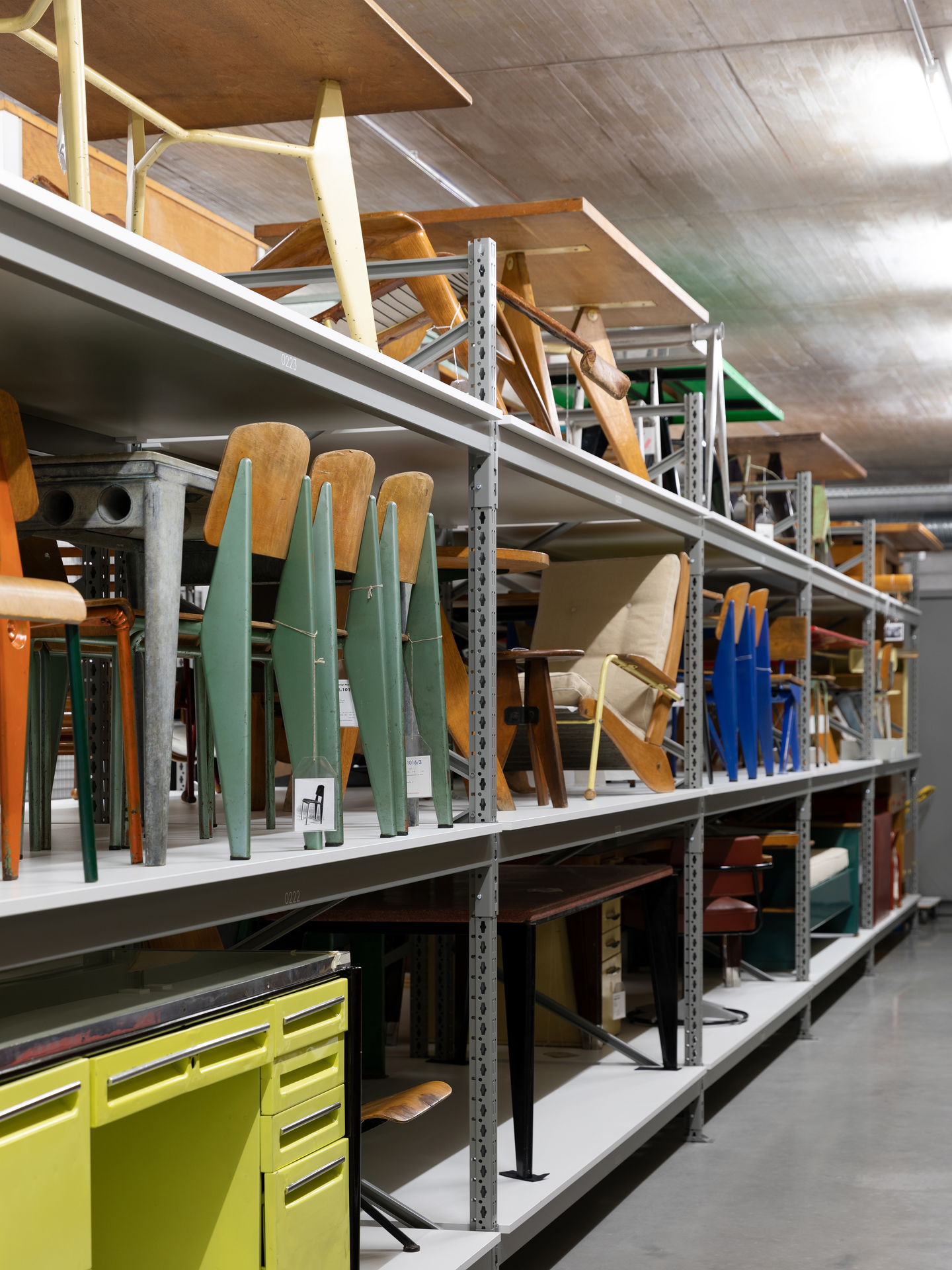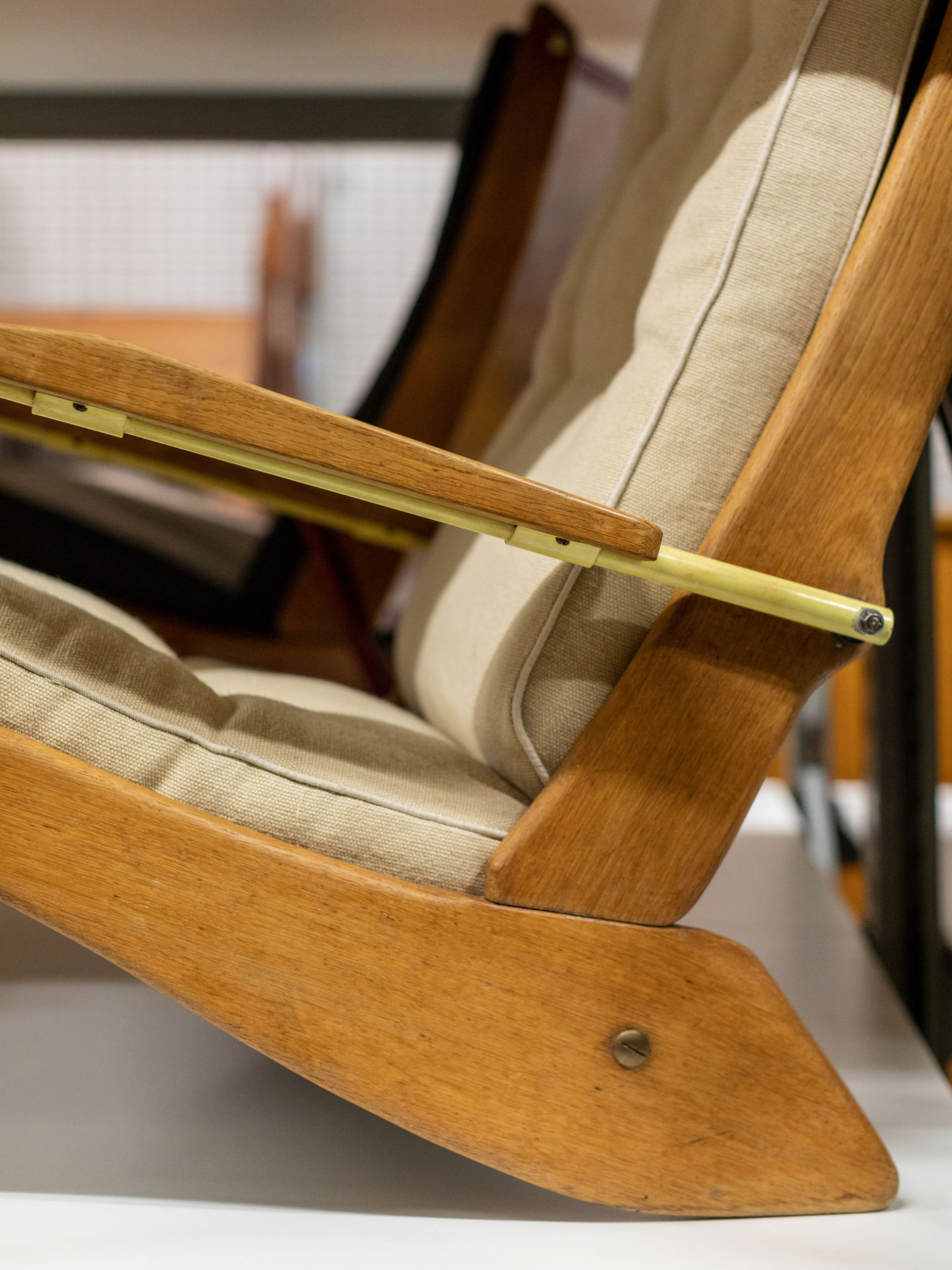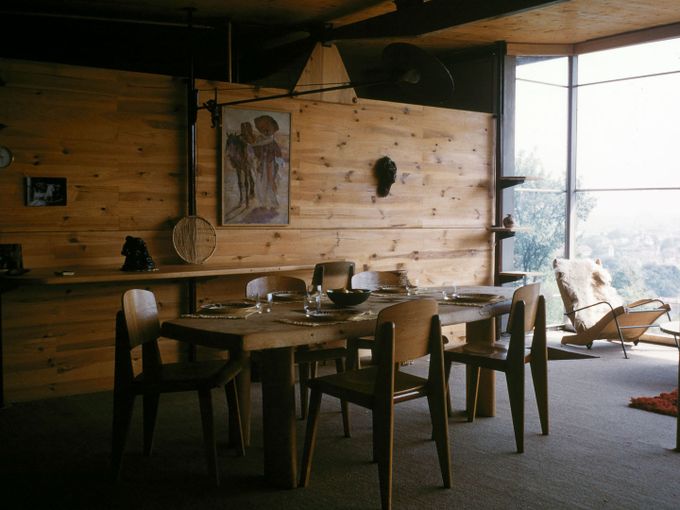The Jean Prouvé Collection at the Vitra Design Museum
An interview with Serge Mauduit, Collections Curator

The Vitra Design Museum in Weil am Rhein, Germany, is home to the world’s most extensive Jean Prouvé museum collection. It dates back to the 1980s when Rolf Fehlbaum (Chairman Emeritus at Vitra) acquired the first Jean Prouvé design, an Antony chair that he found in Paris, sparking Fehlbaum’s interest in the work of Jean Prouvé.
The Prouvé designs he gathered over the years grew into an immense collection that culminated with the 2006 Vitra Design Museums exhibition ‘Jean Prouvé: The Poetics of the Technical Object’.
Since the Prouvé exhibition, the collection has continued to expand and today represents around 170 pieces, which are used for research purposes and exhibitions. The Jean Prouvé Collection also plays a major role in the ongoing development of the Prouvé design portfolio at Vitra.
Serge Mauduit, Collection Curator at the Vitra Design Museum for nearly 35 years, shares insights from his decades of work with the development of the Jean Prouvé Collection.
Since the Prouvé exhibition, the collection has continued to expand and today represents around 170 pieces, which are used for research purposes and exhibitions. The Jean Prouvé Collection also plays a major role in the ongoing development of the Prouvé design portfolio at Vitra.
Serge Mauduit, Collection Curator at the Vitra Design Museum for nearly 35 years, shares insights from his decades of work with the development of the Jean Prouvé Collection.


Serge, when did you start to work for the Vitra Design Museum? How did it all begin?
Serge, Mauduit: I started to work for the Vitra Design Museum the year before the actual opening in 1989. Prior to my arrival, I was the personal assistant to Alexander von Vegesack who was acquainted with Rolf Fehlbaum and who was hired as the first museum director. These two men had a shared interest in Thonet furniture, which became the foundation for their future collaboration.Vegesack and I first focused on the overall furniture collection that Rolf Fehlbaum had initiated in the late 1970s. It was a small assemblage of 300–500 furniture designs. Then we prepared the opening of the Vitra Design Museum by organising, photographing and buying additional objects for the collection. At that time, it mainly included important pieces by Charles und Ray Eames and George Nelson, along with some Italian and Scandinavian designs. We also searched for a local storage facility on the Vitra Campus to keep the collection near the actual museum.

How about the Jean Prouvé designs? Is it correct that the Antony chair was the first piece in the Prouvé collection?
Yes, the first Prouvé object was collected by Rolf Fehlbaum in the 1980s. It was a vintage Antony chair from 1954, and was already there when I arrived.

Jumping forwards several decades since that first collected piece, today the Vitra Design Museum contains one of the world’s largest furniture collections with a total of around 20,000 objects including 7000 furniture designs. You have been working closely with Rolf Fehlbaum to develop this archive, including artefacts and documents from the Eames Office as well as the estates of prominent designers such as Alexander Girard, George Nelson and Verner Panton. It must have been quite an incomparable and educational experience! About the Prouvé collection: how did it come to be the most extensive Jean Prouvé museum collection in the world?
It is correct that the Jean Prouvé Collection at the Vitra Design Museum represents the greatest number of different Prouvé furniture pieces worldwide, but even so we do not have all the different types or variations within each type. It will probably never be possible to have a complete collection because within each furniture type, there are often a great number of variants. Most orders that went through the Ateliers Jean Prouvé were custom produced and depended on individual needs of the client. The Prouvé Standard chair is a typical example of a Prouvé ‘design evolution’. This type can be found in several variants, refinements and adaptions in response to changing needs and materials, but all pointing back to the same ‘structural idea’. At the Vitra Schaudepot – which is a permanent exhibition of selected designs from the Vitra Design Museum Archive – a timeline visualises the evolution of the Standard chair with a variety of historical models.
The Fauteuil Visiteur, a reclining armchair, is another example of a Jean Prouvé design evolution. This type was also made with several modifications. How many variations does the Vitra Design Museum Archive own?
We have three variations of this model. A Fauteuil Visiteur with plywood backrest and aluminium seat, another Fauteuil variant with wood slats and adjustable back, and finally a very rare Fauteuil Kangourou that has these pronounced wooden hind legs. The fact that Jean Prouvé named the armchair ‘Kangourou’ reveals his fine sense of humour. Like its namesake, the seat carries its weight on its hind legs, and as with his other designs, the profiles reflect their static construction. To reinforce this zone, Prouvé deliberately exaggerated the size of the rear frame and created a shape similar to aircraft wings – a profile that was employed in many of his designs and architectural constructions.

What is the most recent addition to the Jean Prouvé Collection?
The newest addition to the Jean Prouvé Collection is a small stool. It is like the Tabouret Solvay, but with some distinct differences, especially the connecting parts in metal. As mentioned, we try to be as complete as possible. For those objects we do not own, occasionally we learn of unique pieces before they are available on the market, but in view of current prices, we would probably not buy them anyway.Yes, indeed. Over the last 20 years, the popularity and cost of Jean Prouvé vintage pieces has risen tremendously. How does the Vitra Design Museum differ from the galleries and auction houses?
The Jean Prouvé Collection at the Vitra Design Museum is here for research purposes and exhibitions, the objects are not to be resold. Jean Prouvé was one of the major designers of the twentieth century, and for many years now, the work of Jean Prouvé has formed a key focus at the museum. The auction houses, and most collectors, buy the pieces as an investment to resell them.Having worked close to these pieces for several decades, do you feel that you have established a greater understanding of the man, Jean Prouvé?
Well, Prouvé designed most furniture for universities, schools and social institutions, and that already says a lot about the man. Many of these designs were subsequently further developed and produced for the domestic market. Jean Prouvé had a social mind. He called himself a ‘factory man’, and preferred to work directly with the machines in the workshop side-by-side with his employees. During World War II, the Ateliers Jean Prouvé expanded to a workforce of 200 employees. It is said that when he lost his workshop in the 1950s, he felt that he had lost both his hands.
The Vitra Design Museum is an independent institution from Vitra, and its extensive collection of design objects forms the basis of many exhibitions, publications and research projects that reach far beyond the portfolio of Vitra authors.
The museum collection plays a major role in Vitra’s overall identity and has an important influence on how the company works when developing and communicating the classic as well as the contemporary design portfolio. The collection is an inspiration and a learning opportunity for Vitra’s employees and designers.
The museum collection plays a major role in Vitra’s overall identity and has an important influence on how the company works when developing and communicating the classic as well as the contemporary design portfolio. The collection is an inspiration and a learning opportunity for Vitra’s employees and designers.
Publication date: 9.6.2022
Author: Stine Liv Buur
Images: Vitra


